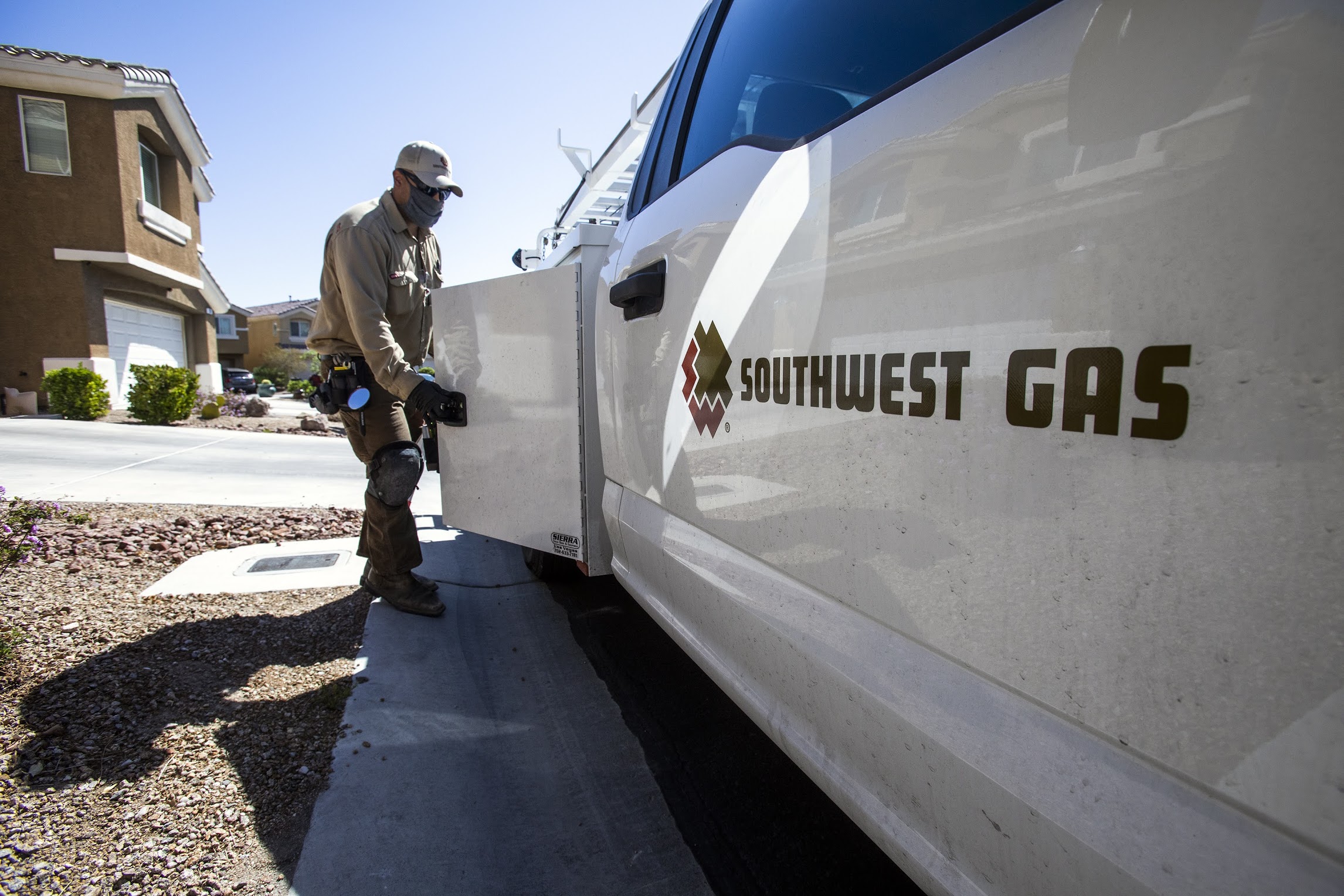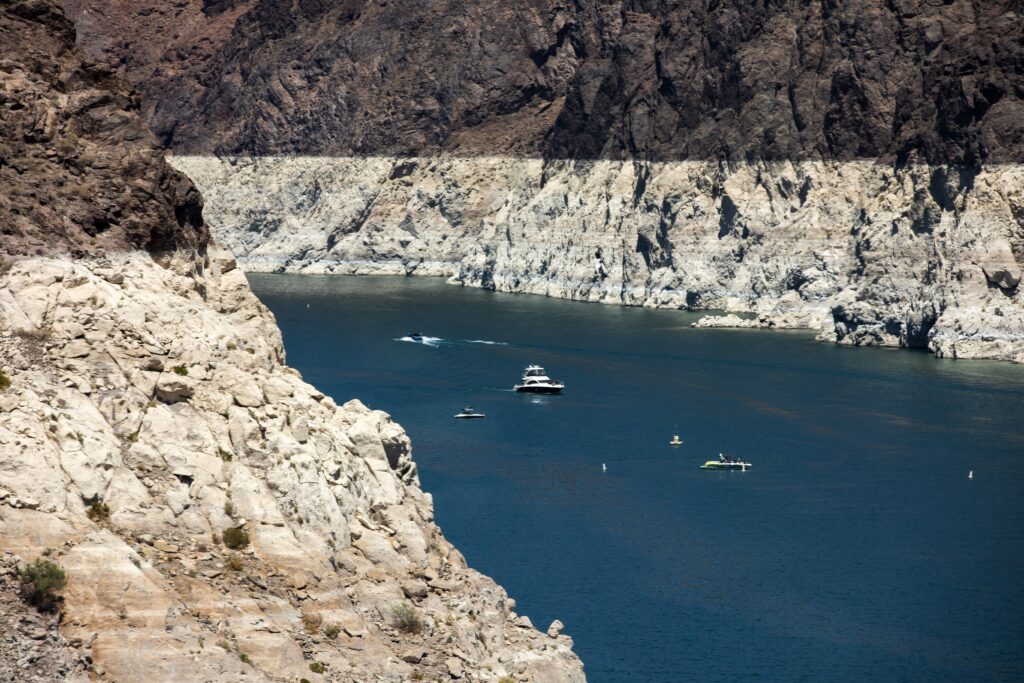Southwest Gas is looking to raise rates. What should customers pay for?

Good morning, and welcome to the Indy Environment newsletter.
As always, we want to hear from readers. Let us know what you’re seeing on the ground and how policies are affecting you. Email me with any tips or suggestions at [email protected]
To get this newsletter in your inbox, subscribe here.
The complicated procedure for deciding utility rates begins with a filing — a voluminous filing — with the state’s utility regulator. The documentation is complex and technical, many steps away from the bills that we see on the front-end when we pay for energy in homes, businesses and schools.
In the case of Southwest Gas, the state’s largest natural gas provider, utility officials filed no less than 34 volumes of testimony, statements and schedules in September last year as part of an application to increase customer rates. Many of these filings are more than 100 pages, and utility regulators have had to wade through them to set customer rates.
But there is a reason for the book-length documents: These rate filings are a crucially important part of how and on what terms customers pay for the energy they use. It’s how gas utilities, as well as electric utilities, defend their proposed rates before they go into effect. State utility regulators, in turn, use the filings to decide if the rates are just and reasonable, balancing the interests of ratepayers with the interests of a utility’s shareholders.
This all happens in what is known as a “rate case.” And Southwest Gas, for the third time since 2018, is asking the Public Utilities Commission of Nevada to consider boosting base rates to cover its costs. The big question always is: What should customers pay for? It’s an especially important one as the public debate over the future of natural gas heats up as state lawmakers and regulators increasingly adopting policies to move away from fossil fuels.
The utility argues that the rate increase is needed to cover the changing costs of capital, infrastructure investments (including the costs of its gas expansion to Mesquite), operational and maintenance needs, and expenses related to the pandemic.
“For the last … four years, we've filed three rate cases over that time period,” said Justin Brown, a senior vice president with Southwest Gas. “It's really just driven by pipe replacement activity, customer growth, and just changes in our operating expenses that really drives that need.”
The current proposal, a compromise reached between the utility, the commission staff, and the attorney general-appointed consumer advocate, would raise average residential monthly bills by $2.31 (or 3.05 percent) in Southern Nevada and $2.16 (or 2.85 percent) in Northern Nevada. (Southwest Gas had originally asked the commission for a higher rate increase of about $3.50).
For reference, the average monthly bill for a single-family residence in Southern Nevada is $45.07. In Northern Nevada, the average monthly bill comes out to $75.77.
The rate case comes at a time when the gas utility has faced increasing pressure. Gas prices have increased due to a number of factors, leading to higher customer bills this winter. The state’s climate change strategy called for a transition away from gas, a fossil fuel that contributes to greenhouse gas emissions.
Environmental and social justice groups are pushing regulators to carefully scrutinize the utility’s push to expand its footprint and infrastructure, arguing that doing so could leave the public responsible for paying off unnecessary assets as the state’s economy — and the country’s economy — decarbonize. At the same time, the utility spent the last few months fending off an unsolicited takeover from investor Carl Icahn, who has concerns about how the company is being managed. management concerns.
Multiple groups filed comments as part of the rate case, expressing concerns about the utility seeking to raise rates during the pandemic and about continuing to build out gas infrastructure as the state works to lower its carbon footprint to a net-zero by 2050 goal.
The Nevada Conservation League said it was “appalled by Southwest Gas’s proposal to raise rates for the third time in less than four years, especially when hard-working Nevada families are still desperately trying to get back on their feet and recover from this devastating pandemic.”
“Most of this proposed increase is driven by capital costs to replace and expand the gas system, a system which may be obsolete in the next few decades as communities shift to cleaner sources of energy,” the group wrote in comments filed by its executive director, Paul Selberg.
In an interview last week, Brown, Southwest Gas’ senior vice president, defended the utility’s investments in infrastructure. Southwest Gas has argued that continued natural gas use — even the expansion of the fossil fuel — can lessen the state’s greenhouse gas emissions by replacing more polluting forms of energy in the short-term. The state’s current climate strategy, like most strategies, seeks to transition from gas to electric appliances powered by renewables.
“The fact of the matter is, there’s plenty of opportunities to focus on reducing [greenhouse gas] emissions in the short term by actually increasing natural gas usage, especially if you're focused on economy-wide [greenhouse gas] reductions, but then longer-term focusing on investments in reducing the carbon intensity of the fuels,” Brown said last week. “You're still going to need to rely on combustible fuels… to make sure that we have a reliable energy market in the state.”
Over time, the company has said it would use its infrastructure to deliver alternative fuels, such as biomethane and green hydrogen. These options are being studied across the West, but each solution comes with questions about scalability and concerns about how much demand the alternative fuels can satisfy.
The rate case also raises other questions about what costs are the utility’s responsibility versus the ratepayers’ responsibility. Where does the money go? What is just and fair to put in the customer’s rates? These are the fundamental questions that the utility commission has to ultimately answer. To do so, both the commission’s regulatory staff and the attorney general’s Bureau of Consumer Protection pore through utility documents, making recommendations.
For instance, one staff member recommended not allowing $95,000 of costs associated with furniture purchase for the utility’s headquarters or $115,000 spent on a large screen monitor. There’s that kind of thing debated in the rate case: Receipts, meals, executive compensation.
Other expenses under scrutiny include trade association dues. Southwest Gas sought to include its dues to the American Gas Association in rates (deducting a percentage of dues that go toward lobbying). But staff for the commission recommended rejecting those dues, totaling more than $600,000, according to testimony noted by the Energy and Policy Institute, a utility watchdog group.
The American Gas Association self-reports that 3.8 percent of its activities are dedicated to lobbying. Southwest Gas proposed excluding those from rates. But an expert witness testifying on behalf of the commission staff raised concerns about how reliable that number was and whether it is reasonable for ratepayers to pick up the tab for the rest.
The staff testimony stated that “there is simply too much uncertainty surrounding the types of activities being undertaken, by whom they are undertaken, the actual costs, and whether they are appropriately considered ‘lobbying’ expenses to have any confidence that the 96.2 percent of membership dues paid to the [American Gas Association] is a reasonable amount.”
This is a question that is facing many utilities, regulators and customers. The Federal Energy Regulatory Commission, after it was petitioned by the Center for Biological Diversity, is looking at whether utilities should be allowed to recover their trade association dues through rates.
The groups involved are concerned that, under the current system, ratepayers could be paying for utility trade group lobbying that climate activists argue undermines decarbonization efforts.
The second issue relates to COVID-19. In March 2020, the commission ordered utilities to track COVID-19 costs related to customers who could not pay their bills. In April 2020, Southwest Gas stopped charging customers late fees. The company proposed recouping those late charges, which totaled about $6.6 million, through rates, as part of costs associated with COVID-19. But both regulatory staff and the consumer advocate have raised concerns.
The commission staff questioned whether the commission’s March order should apply to the waived late fees, or what essentially was “unbilled revenue.” Brown, with Southwest Gas, said these late pay charges could not be offset by other decreased costs during the pandemic. The charges are associated with monitoring and managing customer accounts.
On that question, the state’s top utility regulators are likely to weigh in soon. Last week, Southwest Gas reached a settlement agreement with the commission staff, which operates separately from the three-body commission, and the consumer advocate’s office. That deal requests that the commission consider how late-pay charges fit in with its COVID-19 order.
The compromise is known as a “black box” settlement. That means it does not specify, by a line-item accounting, of what is included and what is not included in the compromise rate increase. Instead, it provides a general outline of what the parties agree might be just and reasonable rates for the commission to consider. In the coming weeks, the commission will rule on the deal — and hopefully some issues that the deal leaves unanswered.

Here’s what else I’m watching this week:
The Southwest’s megadrought is the longest 22-year dry period in at least 1,200 years, according to a study published in the journal Nature Climate Change on Monday. Significantly, researchers found that about 40 percent of the severity of the current drought can be attributed to human-caused climate change. The Los Angeles Times’ Ian James has more on the research.
On Friday, the Winnemucca Indian Colony filed a motion to intervene in an ongoing case challenging the government’s permitting of the Thacker Pass Mine. Federal Judge Miranda Du has not yet ruled on the motion. In a proposed complaint, the Winnemucca Indian Colony alleges that the federal government failed to comply with environmental and preservation laws when it approved the mine land last year. The mine would be built on federal public land. The Nevada Current’s Jeniffer Solis wrote about the motion to join the case.
The Clark County Commission gave its unanimous approval Tuesday to a resolution supporting the Avi Kwa Ame Monument, the Las Vegas Sun’s Jessica Hill reports.
An interesting press release came to my inbox on Monday: The Nevada State Medical Association announced its support for federal legislation that would put a price on carbon.
The Los Angeles Times’ Sammy Roth looks at the remaining coal mines in the West.
